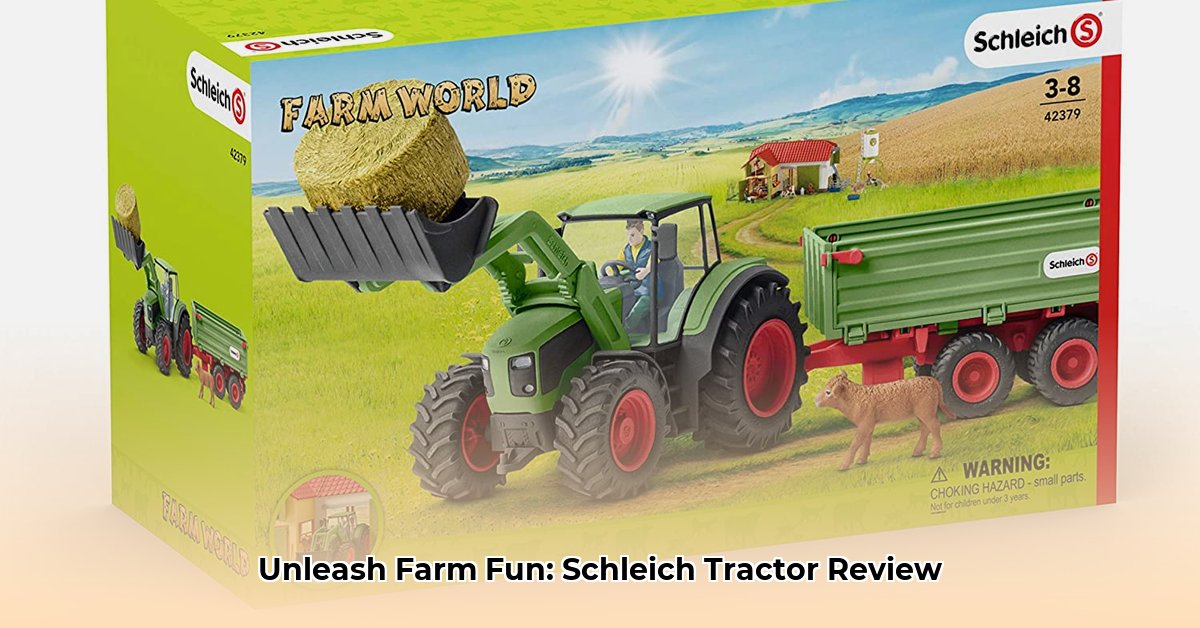
A Detailed Look at Sustainability in Children's Toys
Let's get down to earth and talk about the Schleich tractor. It's more than just a popular toy; it's a microcosm of agricultural life, sparking children's imaginations and potentially fostering a deeper understanding of sustainability. But how environmentally sound is this seemingly simple plaything? This in-depth analysis explores the Schleich tractor's durability, manufacturing processes (inferred from available information), and its potential impact on children's environmental awareness. For larger-scale play, consider ride-on tractors.
The Schleich tractor, with its meticulously detailed features and sturdy build, immediately captivates young minds. But beyond the immediate appeal, lies a crucial question: Does its production reflect a commitment to environmental responsibility? The answer, as we will see, is multifaceted.
High-quality materials contribute significantly to the tractor's exceptional longevity. Schleich's 85-year history speaks volumes about their dedication to craftsmanship and durability. This translates to fewer replacements over time, directly minimizing plastic waste sent to landfills. Isn't it remarkable to think that a toy can model a sustainable approach to consumption? How many of us have toys that, as kids, lasted for years? The durability itself represents a tangible reduction in the environmental footprint, a refreshing shift in the often short-lived nature of children’s toys.
More Than Just Playtime: Fostering Environmental Awareness
The Schleich tractor's appeal extends beyond its durability. The realistic details ignite children’s imaginations, transforming playtime into a miniature farming world. Children engage in pretend play, hauling hay bales, caring for animals, and managing their own mini-farm. This isn't just imitation; it's an indirect introduction to agricultural processes and the responsibility inherent in food production. Even more powerful than the play itself is the opportunity for parents to engage in conversation, connecting the child's play to the origins of food and responsible land management. How can we better leverage these interactions to foster environmental consciousness in the next generation?
Areas for Improvement: Transparency and Sustainable Practices
While the longevity of Schleich tractors is commendable, greater transparency regarding their sustainability practices is needed. Detailed information on material sourcing – are they sustainably sourced? – and packaging composition – is it recycled or eco-friendly? – remains crucial. This information is essential for environmentally conscious consumers seeking to align their purchasing decisions with their values. The Schleich tractor's potential for positive environmental impact would be greatly amplified by clearer communication of their commitment to sustainable manufacturing.
A Three-Part Plan for a Greener Future
The Schleich tractor's journey towards heightened sustainability requires a collaborative approach. Here’s a three-part actionable plan:
Schleich: Conduct a comprehensive Life Cycle Assessment (LCA) of their products and transparently communicate these findings and sustainable practices in marketing materials. This would establish concrete data-backed claims for consumers.
Parents/Consumers: Prioritize durable, educational toys from companies committed to transparency and sustainability. Look for certifications like Cradle to Cradle, and actively support companies demonstrating genuine environmental concern.
Educators: Utilize the Schleich tractor to engage children in discussions about farming, animal welfare, and sustainable agricultural practices. This transforms the toy into a teaching tool, expanding its positive impact beyond individual playtime.
The Broader Picture: Sustainability in the Toy Industry
The Schleich tractor serves as a case study in broader discussions regarding environmental responsibility within the toy industry. It underscores the need for increased transparency in manufacturing processes and a shift toward producing high-quality, durable goods that minimize waste. Toys, inherently, have immense potential for educating children about important concepts – from sustainability to cultural understanding – in engaging and memorable ways. The Schleich tractor exemplifies this potential, emphasizing the importance of clear and consistent communication about sustainable practices throughout the product’s lifecycle.
Conclusion: Small Toys, Big Impact
The Schleich tractor, with its durability and potential to spark conversations about sustainability, represents a step in the right direction. However, continued improvements in transparency and the adoption of more sustainable materials are crucial. The future of play must be more environmentally conscious, and toys like the Schleich tractor can, and should, play a crucial part in shaping that future.